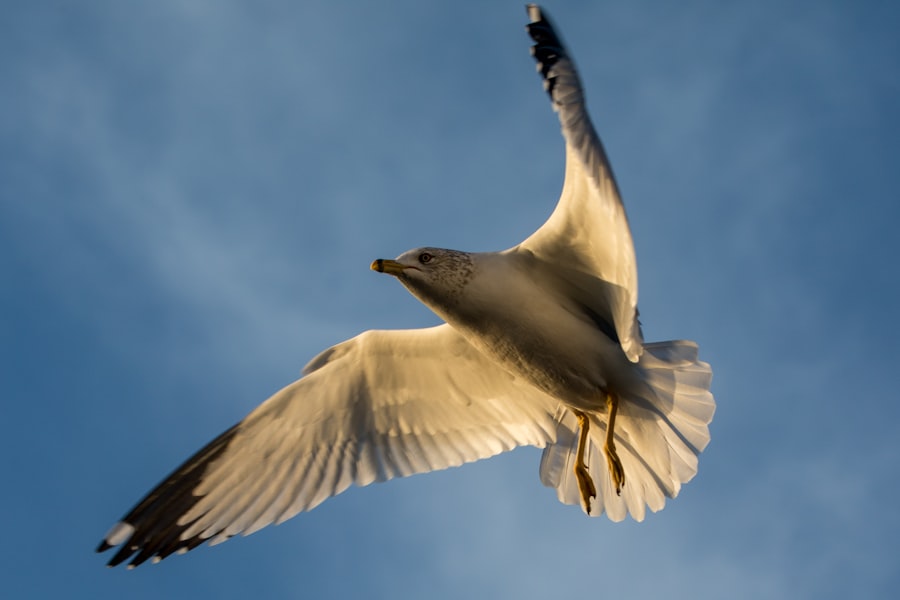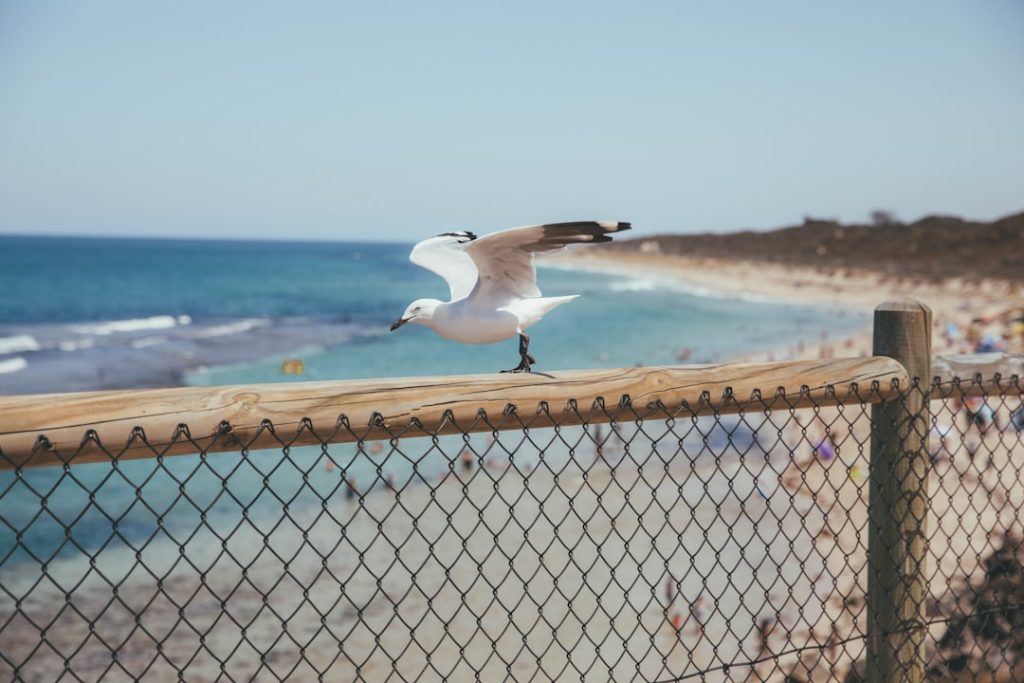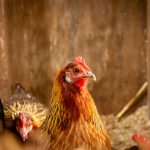Chickens possess the ability to fly short distances, which can present challenges for their owners. Preventing chickens from flying is crucial for several reasons. Primarily, it helps contain them within their designated enclosure, reducing the risk of escape to neighboring properties or roads where they may face injury or predation.
Limiting flight also prevents potential damage to gardens, crops, and other property, thereby avoiding conflicts with neighbors. Keeping chickens grounded also protects them from aerial predators. When chickens fly and roost in elevated locations, they become more vulnerable to attacks from hawks, owls, and other birds of prey.
By restricting their ability to fly, owners can better ensure the safety of their flock. Furthermore, flying chickens can be difficult to manage during routine care and maintenance. Catching and handling them becomes more challenging when they can easily evade capture by taking flight.
Understanding and addressing the need to keep chickens from flying is essential for maintaining the safety and security of the flock, preserving positive relationships with neighbors, and minimizing potential property damage. Implementing measures to restrict flight is an important aspect of responsible chicken ownership.
Table of Contents
- 1 Clipping the Wings of Your Chickens
- 2 Providing Adequate Roosting and Enclosure
- 3 Using Chicken-Friendly Fencing
- 4 Distracting Chickens with Enrichment
- 5 Training Chickens to Stay Grounded
- 6 Seeking Professional Advice for Persistent Flyers
- 7 FAQs
- 7.1 What are the reasons for wanting to keep chickens from flying?
- 7.2 Are there specific chicken breeds that are more prone to flying?
- 7.3 What are some methods to prevent chickens from flying?
- 7.4 Is it safe to clip a chicken’s flight feathers?
- 7.5 Are there any natural deterrents to prevent chickens from flying?
Key Takeaways
- Understanding the need to keep chickens from flying:
- Chickens can fly over fences and escape, leading to potential dangers and loss.
- Flying chickens can damage property and cause disturbances in the neighborhood.
- Clipping the wings of your chickens:
- Wing clipping is a safe and effective method to prevent chickens from flying.
- It involves trimming the primary feathers of one wing to disrupt their balance and flight.
- Providing adequate roosting and enclosure:
- A well-designed coop with high roosting bars can discourage chickens from flying.
- Ensuring a secure and spacious enclosure will limit the desire for chickens to fly away.
- Using chicken-friendly fencing:
- Choose fencing with a height and material that prevents chickens from flying over.
- Consider adding a mesh or netting to the top of the fence for extra security.
- Distracting chickens with enrichment:
- Providing environmental enrichment such as perches, toys, and treats can keep chickens grounded and entertained.
- Enrichment activities can redirect their natural instincts to fly and explore.
- Training chickens to stay grounded:
- Consistent training and positive reinforcement can teach chickens to stay within their designated areas.
- Using treats and rewards can help reinforce the behavior of staying grounded.
- Seeking professional advice for persistent flyers:
- If chickens continue to fly despite preventive measures, seek advice from a professional such as a veterinarian or animal behaviorist.
- Professional guidance can help address underlying issues and provide tailored solutions for persistent flyers.
Clipping the Wings of Your Chickens
The Procedure of Wing Clipping
Wing clipping is a simple and painless procedure that involves trimming the primary feathers on one wing, which disrupts the bird’s balance and prevents it from achieving lift while flying. To clip a chicken’s wings, it is essential to use sharp scissors and to trim only the primary feathers, being careful not to cut into the blood feathers or cause any injury to the bird.
Timing and Frequency of Wing Clipping
It is recommended to clip only one wing to maintain balance and prevent injury. When clipping a chicken’s wings, it is crucial to consider the timing and frequency of the procedure. Wing clipping is typically done when chickens are young, around 8-12 weeks of age, before they have developed strong flying abilities. Additionally, wing clipping should be done as needed, typically once or twice a year, as feathers regrow over time.
Maintenance and Monitoring
It is vital to monitor the regrowth of feathers and re-clip as necessary to maintain the effectiveness of the procedure. By doing so, you can ensure the safety and security of the flock. Overall, wing clipping is a safe and effective method for keeping chickens from flying, and when done properly, it can help prevent potential risks and hazards.
Providing Adequate Roosting and Enclosure

In addition to wing clipping, providing adequate roosting and enclosure is essential for keeping chickens from flying. Roosting bars should be provided inside the coop at a height that prevents chickens from jumping or flying up to them. This will discourage chickens from attempting to roost in high places and reduce the likelihood of them flying out of the coop.
Additionally, ensuring that the coop is secure and free from gaps or openings will help prevent chickens from escaping. Regular maintenance and inspection of the coop and enclosure are important for identifying and addressing any potential escape routes. Furthermore, providing adequate space and enrichment within the enclosure can help reduce the likelihood of chickens attempting to fly.
Chickens that have plenty of space to roam, scratch, and dust bathe are less likely to feel the need to escape their enclosure. Additionally, providing environmental enrichment such as perches, dust baths, and toys can help keep chickens mentally stimulated and content, reducing the likelihood of them attempting to fly. Overall, providing adequate roosting and enclosure is essential for keeping chickens from flying and ensuring their safety and well-being.
Using Chicken-Friendly Fencing
Using chicken-friendly fencing is another important aspect of preventing chickens from flying. The type of fencing used should be appropriate for the size and breed of chickens being kept. For smaller breeds or bantams, a lower fence height may be sufficient, while larger breeds may require taller fencing to prevent them from flying over.
Additionally, it is important to use fencing with small enough gaps or mesh size to prevent chickens from squeezing through or getting caught. Electric fencing can also be an effective deterrent for preventing chickens from flying over fences. Electric poultry netting or electric wires can be installed along the top of the fence to discourage chickens from attempting to fly over.
It is important to ensure that electric fencing is installed properly and used safely to prevent injury to the chickens. Overall, using chicken-friendly fencing is essential for keeping chickens contained and preventing them from flying out of their enclosure.
Distracting Chickens with Enrichment
Distracting chickens with enrichment is another effective strategy for preventing them from flying. Providing environmental enrichment such as perches, dust baths, hanging treats, and toys can help keep chickens mentally stimulated and engaged, reducing the likelihood of them attempting to fly. Enrichment activities can also help redirect natural behaviors such as jumping and flapping into more appropriate outlets.
Additionally, providing plenty of space for chickens to roam and explore can help reduce the urge to fly. Allowing chickens access to a large outdoor area with plenty of vegetation, insects, and natural materials can help satisfy their natural instincts and reduce boredom. Overall, distracting chickens with enrichment is an important aspect of preventing them from flying and promoting their overall well-being.
Training Chickens to Stay Grounded

Positive Reinforcement Techniques
Training chickens to stay grounded is an effective method for preventing them from flying. This can be achieved by using positive reinforcement techniques such as offering treats or praise when they stay on the ground or return to the coop when called. By consistently rewarding desired behaviors and redirecting unwanted ones, chickens can learn to stay grounded and avoid attempting to fly.
Additionally, providing regular handling and socialization can help build trust between chickens and their owners, making them less likely to attempt escape. Spending quality time with chickens, offering treats, and gentle handling can help build a strong bond and encourage them to stay close by.
Effective Prevention of Flight
Overall, training chickens to stay grounded through positive reinforcement and socialization is an effective way to prevent them from flying. By combining these methods, chicken owners can create a safe and secure environment for their birds, reducing the risk of escape and potential harm.
Seeking Professional Advice for Persistent Flyers
In some cases, despite best efforts, some chickens may persist in attempting to fly. In these situations, seeking professional advice from a veterinarian or experienced poultry keeper may be necessary. A professional can provide guidance on alternative methods for preventing flight or offer insights into potential underlying reasons for the behavior.
Additionally, consulting with a professional can help identify any potential health or welfare issues that may be contributing to the behavior. By seeking professional advice, chicken owners can gain valuable insights and support for addressing persistent flyers and ensuring the safety and well-being of their flock. In conclusion, keeping chickens from flying is essential for their safety, security, and well-being.
Understanding the need to prevent flight, utilizing methods such as wing clipping and providing adequate roosting and enclosure, using chicken-friendly fencing, distracting chickens with enrichment, training them to stay grounded, and seeking professional advice for persistent flyers are all important aspects of preventing chickens from flying. By implementing these strategies and taking proactive measures, chicken owners can help ensure that their flock remains safe, contained, and content.
If you’re looking for ways to keep your chickens from flying, you may also be interested in learning about the benefits of using a heater in your chicken coop. Check out this article on heater options for a chicken coop to ensure your feathered friends stay warm and comfortable during the colder months.
FAQs
What are the reasons for wanting to keep chickens from flying?
Flying chickens can escape from their enclosure, get lost, or become prey to predators. Additionally, flying chickens can damage property or cause disturbances in the neighborhood.
Are there specific chicken breeds that are more prone to flying?
Certain breeds, such as Leghorns and Anconas, are known for their ability to fly higher and farther compared to other breeds. Bantam breeds are generally less likely to fly due to their smaller size.
What are some methods to prevent chickens from flying?
Trimming the flight feathers on one wing, providing a covered run, and using netting or fencing with a roof are effective methods to prevent chickens from flying. Additionally, keeping the chickens occupied with enriching activities can reduce their desire to fly.
Is it safe to clip a chicken’s flight feathers?
Clipping a chicken’s flight feathers is a safe and painless procedure when done correctly. It involves trimming the primary feathers on one wing, which temporarily affects the chicken’s ability to achieve lift and fly.
Are there any natural deterrents to prevent chickens from flying?
Placing obstacles such as branches or hanging objects in the chicken’s enclosure can discourage them from attempting to fly. Additionally, providing adequate space, perches, and enrichment can reduce the likelihood of chickens wanting to fly.
Meet Walter, the feathered-friend fanatic of Florida! Nestled in the sunshine state, Walter struts through life with his feathered companions, clucking his way to happiness. With a coop that’s fancier than a five-star hotel, he’s the Don Juan of the chicken world. When he’s not teaching his hens to do the cha-cha, you’ll find him in a heated debate with his prized rooster, Sir Clucks-a-Lot. Walter’s poultry passion is no yolk; he’s the sunny-side-up guy you never knew you needed in your flock of friends!







